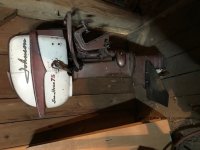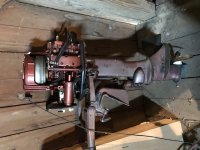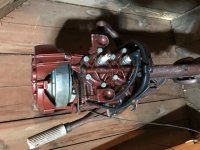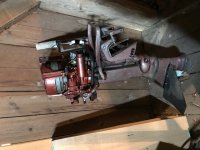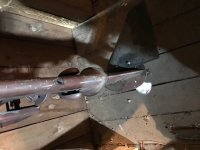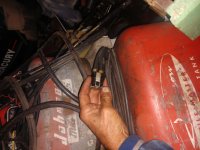Hi everyone, I’m new to this forum and new to outboard engines. I usually hang out on the wooden boat forum, where I have previously built two other boats. A row boat and a sail boat. I am currently beginning my next boat which is a flat bottomed skiff. I was driving past a yard sale this past weekend when I spotted a boat engine. After about 10 minutes I found myself driving back home with my first ever boat engine. I knew nothing about it or what condition it is in, only that it does not currently work. After doing some research, it turns out it is a 1958 Johnson 7 ½ hp AD-12. After taking off the hood I discovered some obvious problems. Firstly, the starter cord is stuck out and won’t retract and secondly the spark plug connector has been torn off. But other than that the whole engine looks like it is in pretty good shape for its age. I took a quick look inside the starter assembly and discovered that the retracting spring is broken. So that solves that mystery, but I thought I would ask all of you experienced with these outboards what your recommendations would be to getting this motor back up and running again. I noticed there are carburetor kits and gasket kits for this engine. I guess the whole thing should be refurbished before I try to start it. I’ve never worked on one of these things before, but it seems like something I could learn by just taking the thing apart and asking a lot of questions on this forum. The manual would help too. Anyway, I have time because I have only just finished lofting the boat design and am in the process of making the station molds on the new boat. Can someone give me an idea of how much it might cost to refurbish this old motor just in parts? I paid $125 for the motor and would like to keep it under $500 all in.
